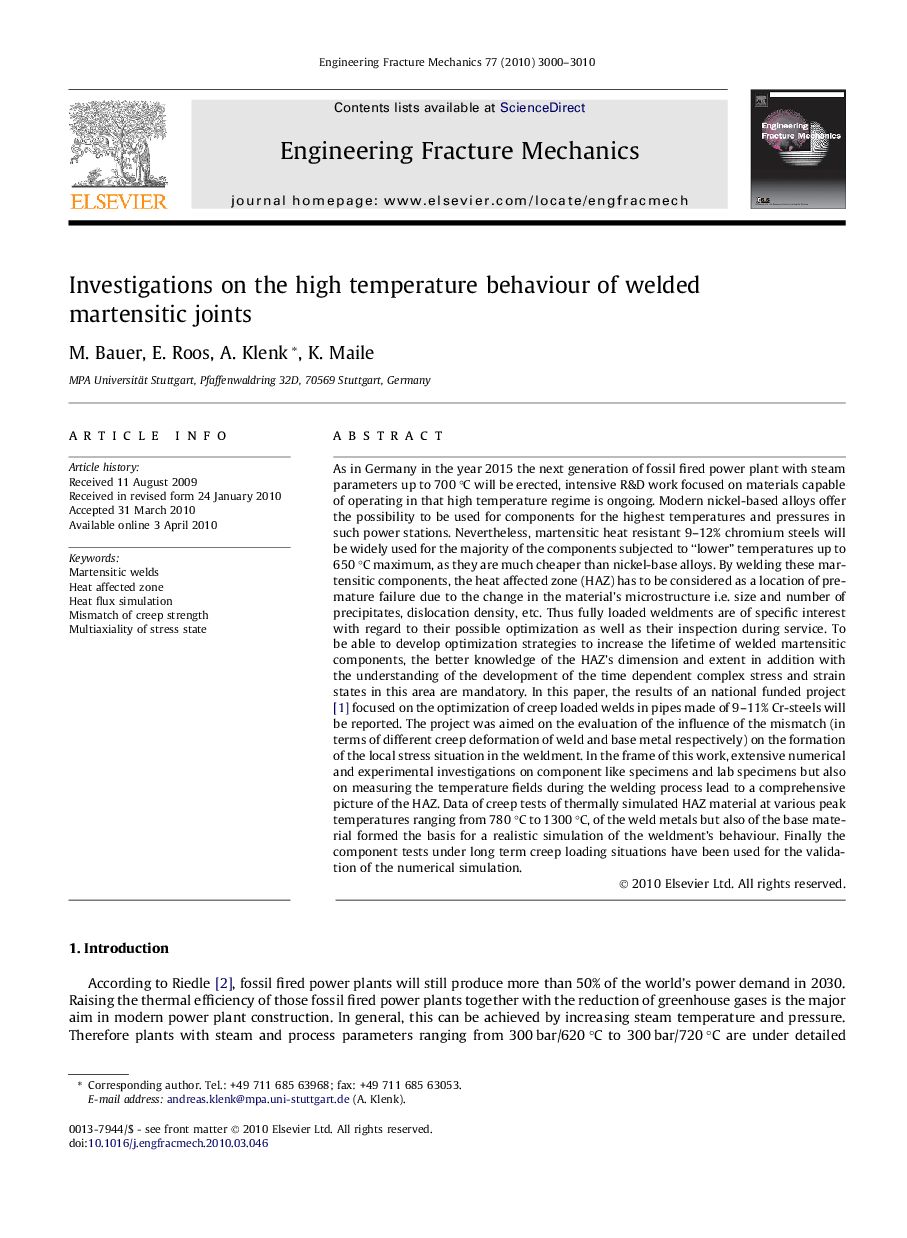| کد مقاله | کد نشریه | سال انتشار | مقاله انگلیسی | نسخه تمام متن |
|---|---|---|---|---|
| 771247 | 897616 | 2010 | 11 صفحه PDF | دانلود رایگان |

As in Germany in the year 2015 the next generation of fossil fired power plant with steam parameters up to 700 °C will be erected, intensive R&D work focused on materials capable of operating in that high temperature regime is ongoing. Modern nickel-based alloys offer the possibility to be used for components for the highest temperatures and pressures in such power stations. Nevertheless, martensitic heat resistant 9–12% chromium steels will be widely used for the majority of the components subjected to “lower” temperatures up to 650 °C maximum, as they are much cheaper than nickel-base alloys. By welding these martensitic components, the heat affected zone (HAZ) has to be considered as a location of premature failure due to the change in the material’s microstructure i.e. size and number of precipitates, dislocation density, etc. Thus fully loaded weldments are of specific interest with regard to their possible optimization as well as their inspection during service. To be able to develop optimization strategies to increase the lifetime of welded martensitic components, the better knowledge of the HAZ’s dimension and extent in addition with the understanding of the development of the time dependent complex stress and strain states in this area are mandatory. In this paper, the results of an national funded project [1] focused on the optimization of creep loaded welds in pipes made of 9–11% Cr-steels will be reported. The project was aimed on the evaluation of the influence of the mismatch (in terms of different creep deformation of weld and base metal respectively) on the formation of the local stress situation in the weldment. In the frame of this work, extensive numerical and experimental investigations on component like specimens and lab specimens but also on measuring the temperature fields during the welding process lead to a comprehensive picture of the HAZ. Data of creep tests of thermally simulated HAZ material at various peak temperatures ranging from 780 °C to 1300 °C, of the weld metals but also of the base material formed the basis for a realistic simulation of the weldment’s behaviour. Finally the component tests under long term creep loading situations have been used for the validation of the numerical simulation.
Journal: Engineering Fracture Mechanics - Volume 77, Issue 15, October 2010, Pages 3000–3010